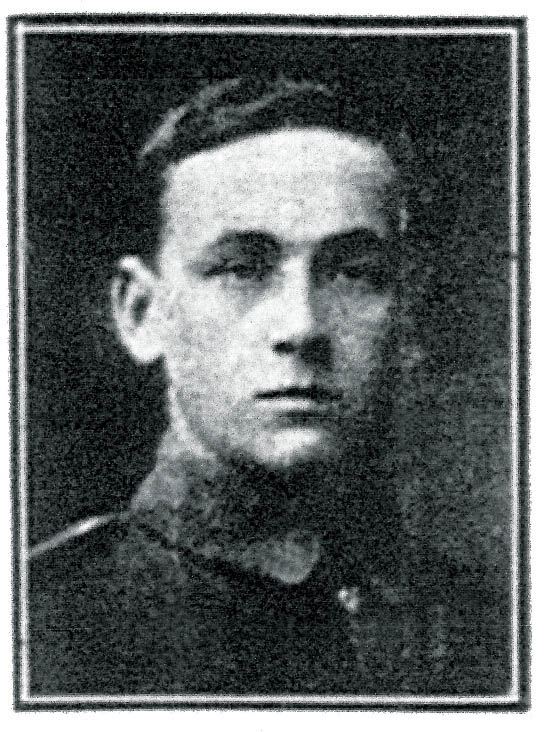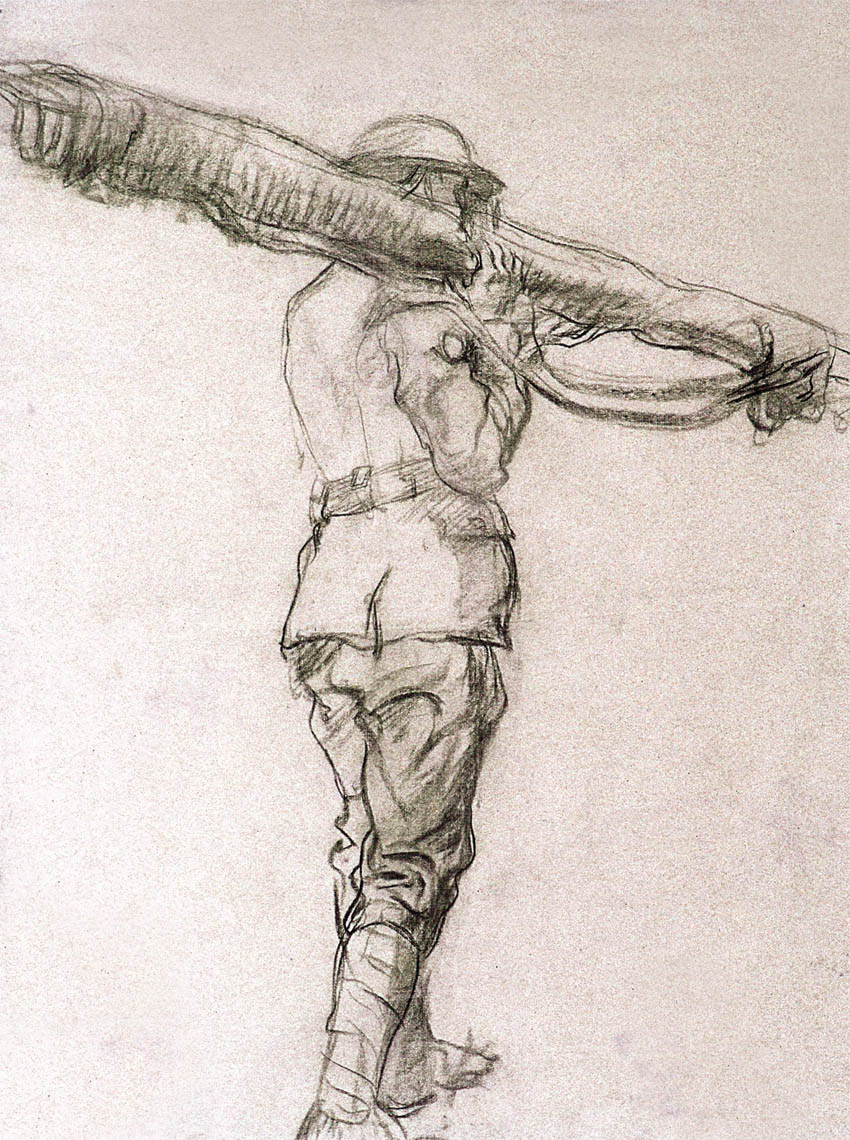Bertie John Simpkin, 4th (Territorial) Battalion, Suffolk Regiment.
Bertie John Simpkin was born on 7th May 1896 in Melton. He was the son of Octavius (a gardener) and Esther Maria (née Addison), one of seven surviving children. In 1901, at the age of four, Bertie was living with his family in Bredfield Street, Woodbridge. By 1911, he was working as an under-gardener and living with his maternal grandparents in Valley Farm Cottage on Doe’s Alley, while the rest of the family remained in Woodbridge.
Bertie enlisted shortly after war began in October 1914, but he was not sent to France until 1916. The first mention of a draft of men joining the battalion that year was on 3rd June when the war diary records that “61 men from 3/4th Suffolk Regiment arrive at Bethune” – this may refer to Bertie.
On 2nd July, the 4th Suffolks were in trenches at Cuincy village until their relief on the 7th July when they were ordered to march the sixty kilometres (thirty-eight miles) south, to the Somme. They arrived at Fricourt on the 14th where the Battle of Bazentin Ridge was raging. The following morning, at dawn, the battalion went into the front line supporting the 1st Middlesex in an attack on Switch Trench and, after severe fighting, a line was held in front of the village of Bazentin-le-Petit. The battalion sustained over two hundred casualties in the offensive and it is likely that Bertie was awarded the Military Medal (MM) for his work assisting the wounded. The Woodbridge Reporter and Wickham Market Gazette of 10th August 1916 reported:
“The gratifying news has been received by Mr and Mrs O Simpkin of 36 Bredfield Street Woodbridge, that their son Bertie John Simpkin of the 4th Suffolks has been awarded the Military Medal for conspicuous gallantry while in action in France. He saw a wounded officer, and despite the danger, went and brought him in, thus saving the officer’s life. In a letter, Private Simpkin said when he went out and got the officer in he never thought anything about having a medal. The hero who is only twenty years of age lived for five years with his grandparents Mr James Addison of Melton. He was in the employ of Mr J A Burness, of Melton Lodge, as an under-gardener, and had been for five years previous to his enlistment soon after the commencement of the war. He went out to France in November 1915 [see note] and has been through several engagements.”
Note: There is no record other than the newspaper article to confirm that Bertie was in France in 1915. As he only received the British War and Victory campaign medals, it suggests that he went to France in 1916.
In late October 1916, the 4th Suffolks were in the front line at Les Boeufs and on 28th, had relieved the 1st Middlesex in Dewdrop Trench, to the east of the village. Over the next few days, the battalion made repeated attempts to capture the German-occupied ridge nearby, none of which were successful. On the 1st November, they were relieved by the 1st Middlesex Regiment. Over the five days they were in trenches, the 4th Suffolks casualties amounted to twenty-two killed, forty-three wounded and four missing. It is likely that Bertie was awarded the Distinguished Conduct Medal (DCM) during this action. His citation reads:
“For conspicuous gallantry and devotion to duty. He displayed great courage and determination in tending and dressing the wounded under heavy fire. He has previously done fine work.”
The job of stretcher bearers in infantry units on the front line was traditionally performed by 
battalion bandsmen. As the war progressed and with the increase of ‘Service’ battalions, the role
was passed onto those with a degree of basic first aid knowledge and the physical strength needed
for the arduous task of transporting wounded over difficult ground to the care of trained medics.
CHARCOAL DRAWING C1916 OF A STRETCHER BEARER. ARTIST UNKNOWN.
(WELLCOME COLLECTION. CC BY)
It was not until the 21st December 1916 that Bertie was presented with his DCM ribbon by Major General Reginald Pinney, commander of the 33rd Division of which the 4th Suffolks were a part. In late 1917, Bertie was given a month’s leave and returned to Suffolk. While on leave, two things happened: the first was that he married Emily Arnold and the second was the presentation of his Distinguished Conduct Medal and Military Medal. The Woodbridge Reporter and Wickham Market Gazette reported the presentation in their 20th September 1917 issue as follows:
“Two Medals for Woodbridge Man
A Woodbridge lad had the great honour of being presented with two medals after the parade of the 3rd Cyclist Brigade on Sunday last at a camp near Woodbridge. The recipient was Bertie John Simpkin, stretcher bearer of 4th Suffolk Regiment and second son of Mr and Mrs O Simpkin of Bredfield Street Woodbridge. The presentation was made by Major General Cuthbert, Commander of 72 Division, who was accompanied by Brigadier-General the Earl of Shaftsbury and the Staff Officers. In making the presentation, the Major General said that the Distinguished Conduct Medal was for valour and gallant conduct, and the Military Medal for distinguished devotion to duty on the field. These medals had been recommended by the Brigade-Commander and passed through the various Commanders until they were received by the Commander-in-Chief, Sir Douglas Haig. If the Commanders did not think the actions worthy of recognition they would not recommend the awards. The General remarked that the honour did not rest alone with Private Simpkin, for the award reflected honour to the Company, the Brigade, town, and county to which he belonged. After the General had pinned the two medals to the breast of Private Simpkins, he asked for Three Cheers which were heartily given.”
Bertie remained with the 4th Suffolks until the end of the war.
Bertie and Emily went on to have two children, Dorothy, who was born in 1919 and Arthur in 1922. Arthur was killed, aged twenty-one, during the Second World War while serving with the 5th Battalion Queen’s Own West Kent Regiment at the Sangro River in Italy. He is remembered on the Melton War Memorial at St Andrew’s Church.
For his war service, Bertie received the Distinguished Conduct Medal, Military Medal and the British War and Victory Medals. At the time of his death in November 1962, Bertie and Emily were living at 1, Plantation Place, Melton. He is buried at Melton Old Church.
